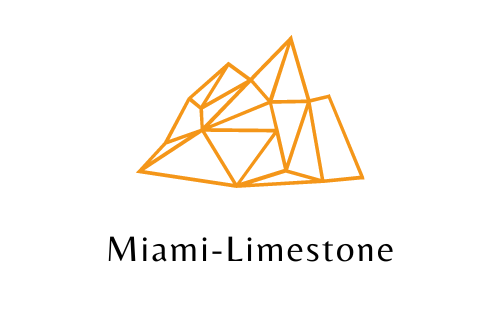What Is Caliche?
Caliche is a layer of sedimentary rock where the particles have been cemented together by the precipitation of minerals in their interstitial spaces. Miami Limestone has extensive history with this type of rock. The cement is usually made of one or more of the following: calcium carbonate, magnesium carbonate, silica, iron oxide, and a combination of these materials. In places where it rains more often, there’s usually less calcification of the root zone than in dry climates. Caliche is a familiar deposit in the United States. It occurs mainly in Arizona, California, Nevada, New Mexico, and Texas. Caliche is associated with problems such as difficult soil conditions for plant growth and soil erosion. Many places around the world have multiple ancient caliche layers in the subsurface. The name caliche is derived from the Spanish word for porous stones that have been cemented by calcium carbonate. The name is used to refer to a piece of the material or the layer from which it was broken, or the cement itself that binds the materials together.
Common Caliche Names
Calcrete
Hardpan
Duricrust
Calcic Soil
What Does Caliche Look Like?
Caliche is a common soil-rock formation found in many regions around the world. Its color ranges from white, to gray, to reddish brown. Caliche is a rock form that can look like conglomerate, breccia, coquina or sandstone if it has enough well-developed calcite crystals in its composition. Caliche can be a very hard, dense, heavy, and durable material if it is firmly bound by a cement that completely fills the interstitial voids between the soil or sediment particles. Poorly cemented tile can also be very weak and friable. Caliche often stand out in excavations and outcrops. They look like well-competent sediment or soil with loose friable material below. Some times it’s overlain by a cemented surface material. It doesn’t matter if you don’t have time to do anything about your yard. Don’t worry. Caliche doesn’t usually grow very deep. Looking to purchase some? Visit our Miami Limestone home page.
Pleistocene Terraces
Cemented gravels have formed the flat, resistant, horizontal cap rocks on the Pleistocene terraces on the banks. Their distant mountains have a Paleozoic composition. Their base consists of limestone, dolomite, and sandstone. Rock weathering was a major contributor to the formation of Caliche formations in the area.
How to Improve Caliche Soil
Caliche is formed when calcium carbonate in the ground fuses soil particles together. If you have a large area of soil, you should try to make it friable before planting. It’s almost impossible to grow a lawn in caliche soil. Caliche soil is a common problem in the landscape. Caliche can create an impermeable layer that prevents water from draining properly through the profile, it can create an alkaline soil environment which inhibits nutrient uptake and can create a situation where the roots of plants are unable to reach the subsoil. All of these issues can cause significant problems when trying to grow healthy lawn grass. For lawn grasses, a soil pH range of 6 to 7.5 is usually ideal. Lawn grass that grows in soils with high levels of calcium is more susceptible to fungal infections, which can lower the overall health and vitality of the plant. The quality of caliche soils can vary so much that you may want to send some samples in to your county extension office for complete soil tests to determine your exact soil conditions and determine the best plan forward. You’ll probably have to do the following:
This is a major drawback because it is often impractical to amend the soil with compost across the entire extent of a huge lawn area. But there are some alternatives to look into, such as reducing costs. Do a Google search for your city and surrounding areas. Some public works departments offer free compost. Divergent effects of glucocorticoids on bone resorption. You might want to consider making your own compost instead of buying it. It’s cheap and easy to do. While no lawn grass will grow well in caliche soil conditions without proper soil amendments, buffalograss (Bouteloua dactyloides) may have a higher tolerance for these conditions and may be a good alternative, depending on your location.If you prefer Kentucky bluegrass, tall fescue, or Bermudagrass as your lawn grass, the amount of amendment soil that’s needed will be approximately 12 to 18 inches. The soil test will give you a good idea of what types of plants will do well in your garden. If you’re raising any species, you’ll need to make sure that you take good care of itas conditions won’t be ideal. You’ll need to feed it and provide a comfortable environment. You’re probably going to need an automatic irrigation system.
